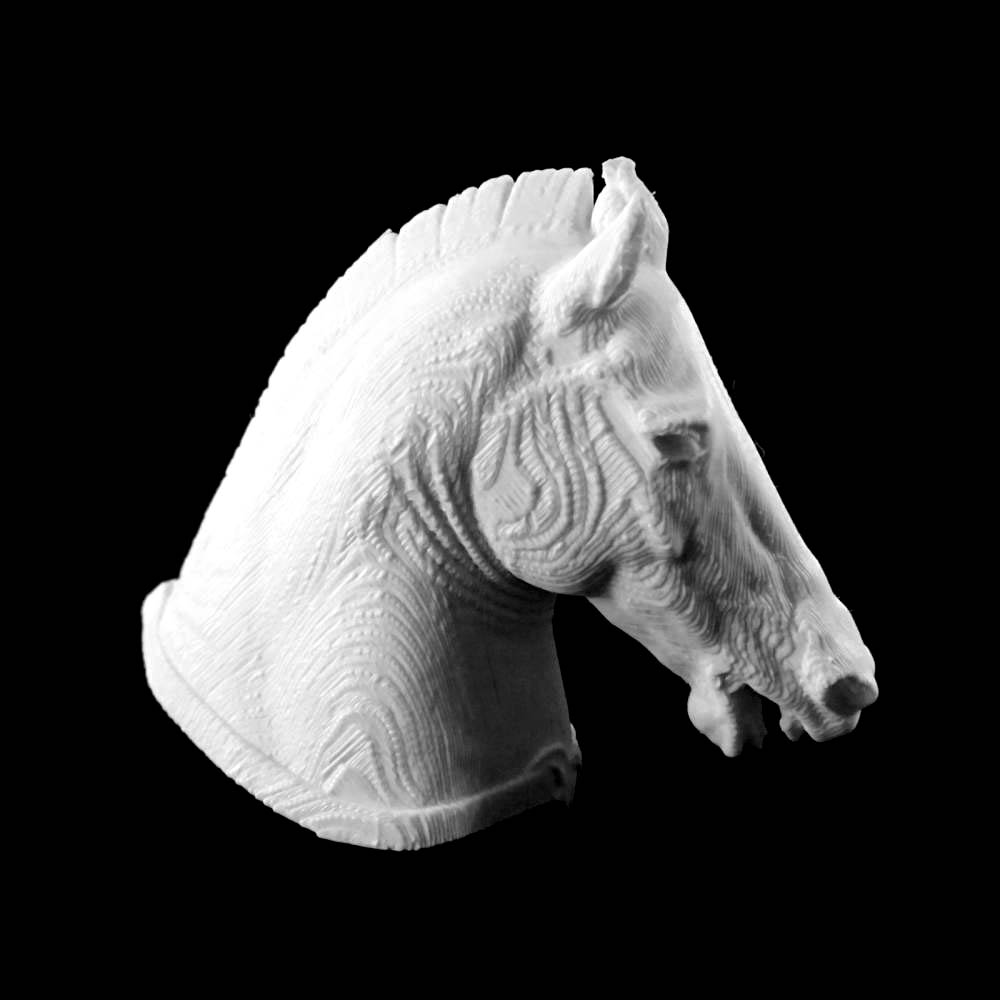
The Medici Riccardi Horse at The Museo Archeologico Nazionale, Florence
myminifactory
This majestic stallion is straining at the bit with nostrils flared wide open and veins bulging prominently. It's likely that this magnificent creature was part of an equestrian masterpiece commemorating a powerful leader or conqueror. One of the challenges ancient sculptors faced was capturing the essence of a wild and forceful horse yet also controlled by its rider. There is an interesting feature that appears on several surviving equestrian statues from antiquity which is that one ear of the horse is inclined forwards and one backwards. The ear facing forwards is ready to meet any challenges ahead, while the ear turned backwards is tuned in to hear the commands or demands of the rider. This powerful horse adds to the impression of strength, control, and power of its rider. The lifelike sculpture once belonged to the renowned Renaissance ruler, Lorenzo de Medici, which stood proudly in the garden of his palace in Florence where many artists admired and copied it. In the 17th century, the horse was transformed into a beautiful fountain where water spurted from the top of its head. Possibly originating from Rome, the horse's head must have been part of an ancient equestrian monument. The dating of this work is greatly debated. Recently, the technique of the gilding and the style of the modeling have led critics to place the horse's head towards the end of the Hellenistic age, and hence prior to the first century BC. It entered the Medici collections in the 15th century, and was probably admired and studied by sculptors such as Donatello and Verrocchio who were active in the Medici environment. In 1495, at the time of its confiscation by the Republican government, the head was in the garden of Palazzo Medici, as confirmed by the confiscation order. Having been returned to Palazzo Medici when the family returned from exile, it was used as an ornamental element for a fountain in the garden of the palazzo of Via Larga. It is recorded in the inventory of the Guardaroba in 1578, where it proves to be set up in the large courtyard, probably of Palazzo Pitti. The bronze has remarkable similarities with another horse's head now in the National Archaeological Museum of Naples referred to Donatello, who must have been directly inspired by the famous archaeological piece in the Medici residence. Moreover, this could also have been the inspiring model for the equestrian monuments created by Donatello (Gattamelata in Padua) and Verrocchio (Colleoni in Venice). This scan originates from Oliver Laric's initiative 'threedscans'. It is part of an ongoing project by Laric, titled 'Versions', which deals with historical and contemporary ideas relating to image hierarchies. Every model produced by Laric is free to be downloaded and used without copyright restrictions. If you use the models please write to stw@myminifactory.com and contact@threedscans.com
With this file you will be able to print The Medici Riccardi Horse at The Museo Archeologico Nazionale, Florence with your 3D printer. Click on the button and save the file on your computer to work, edit or customize your design. You can also find more 3D designs for printers on The Medici Riccardi Horse at The Museo Archeologico Nazionale, Florence.
